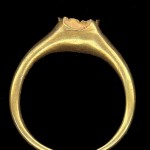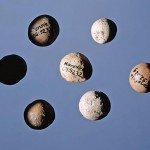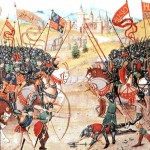I came across an article today that pissed me off so much I actually bothered to register and comment: Genuine antiquities are surprisingly affordable.
Plasma TVs from the back of some guy’s van are surprisingly affordable too. Know why? BECAUSE THEY’RE FRIKKIN STOLEN.
I mean, just look at this quote.
I know it sounds unbelievable that it is possible to pay as little as $200 for a small Egyptian station (954-853 B.C.) or a Neolithic painted pottery jar c. 2000 B.C. or a free blown amber marbled glass flask c. 1st century A.D. for $1,000/$2,000.
Surprisingly the answer is because they aren’t very rare. According to Bill Gage, in the expert department of James Julia Auctions, they turn up regularly at auction. “They are still digging it up and it was untouched for 2,000 years.”
They are still digging it up. There. Right there. Who the hell does Anne Gilbert The Antique Detective think is doing that digging? Can ya maybe detect that every major antiquities-exporting country has LAWS against “digging it up” and selling it for a bargoon to Indiana Jones manqué IT professionals in the greater Chicago area?
Now watch this drive:
If you are still interested check before buying for historical significance, authentic age and good condition. Study museum collections and ask questions.
Historical significance, age and condition. Not a single word in the entire article about history of ownership. No need for buyers to care in the least if they’re supporting grave robbers, drug cartels and terrorists.
So here’s what I said in my comment:
I’m dismayed by your complete lack of acknowledgment that recently surfaced antiques (“They are still digging it up and it was untouched for 2,000 years.”) are most likely looted, stolen by highly destructive grave robbers and trafficked by criminal networks including a vast panoply of terrorists, drug dealers and all manner of criminals.
The market in Apullian red figure vases in particular is notoriously comprised of goods ripped from the ground of central Italy since 1970 in contravention of Italian law and the 1970 UNESCO convention.
To not even mention provenance or ownership history as something potential buyers should care about is deeply irresponsible. That sort of look-the-other-way attitude is why Shelby White, the Getty Museum, the Met and a myriad other collectors and institutions have been forced to return the stolen goods they so gleefully purchased with the reckless encouragement of people like you.
I had links in there but evidentally they don’t allow HTML in comments.
What do you think? Was I too nice?




